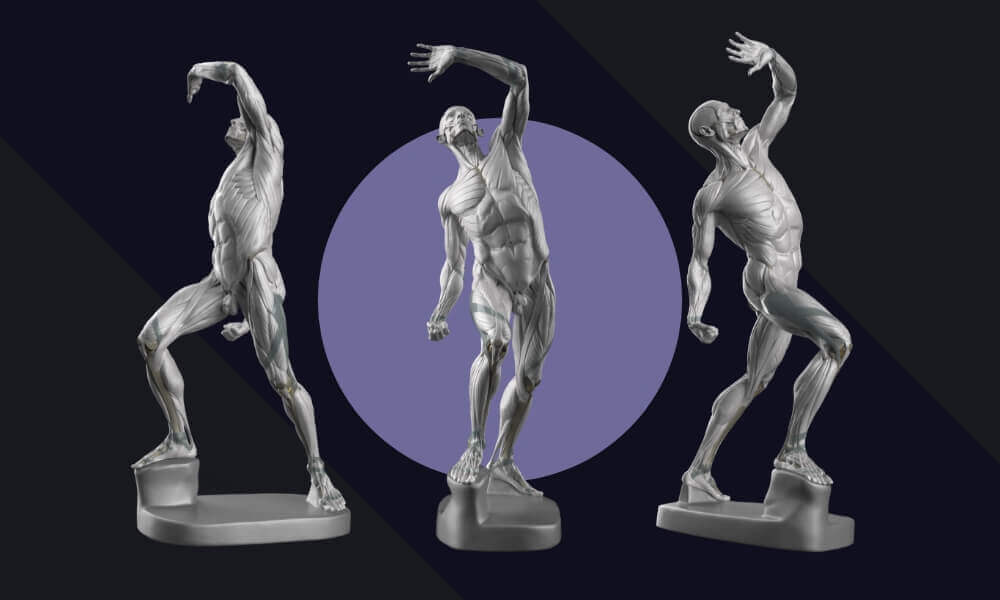Ecorche video series

Écorché is a reference model for any artistic medium. Showing the models muscles and anatomy without the skin. Letting the artist get a better understanding what creates the forms and how to represent them better.
In this series Uldis talks about the importance of Écorché in art and medicine, its history, and how the creation of the new 3D viewer and Écorché model
Écorché art and medicine meets in a sculpture
Do you know what an écorché is? In this video, Uldis Zarins explains the word itself comes from French, where it means skinned. In the art world, this term describes a sculpture that reveals the superficial muscles of a male figure.
Écorché sits somewhere between art and medicine. While during the Renaissance the first écorchés were used mostly by artists, later they became increasingly popular among medical students as well.
History of the Écorché
Let’s dive into the history of the most notable écorchés! Did you know that Houdon’s écorché was just an anatomy study for his sculpture of St. John the Baptist?
Today, the original sculpture is destroyed, but Houdon’s écorché has become world-famous and is found in almost every art academy! But it is not the only one worth knowing. L’écorché combattant made in 1845 by sculptor Jaques-Eugene Caudron and commissioned by doctor Antoin-Louis-Julien Fau is one of the best écorchés out there, and it deserves a spotlight.
Interactive 3D human model for artists Écorché
His time we’ll tell you about the process of creating its 3D model from doing the raw scan to detailing it, fixing some anatomical imprecisions, and color-coding. When we inserted a skeleton into L’ècorchè combattant’s digital model to check its accuracy, we were surprised to discover its great anatomical precision.
Join our newsletter
Be the first to receive news about upcoming books, projects, events and discounts!